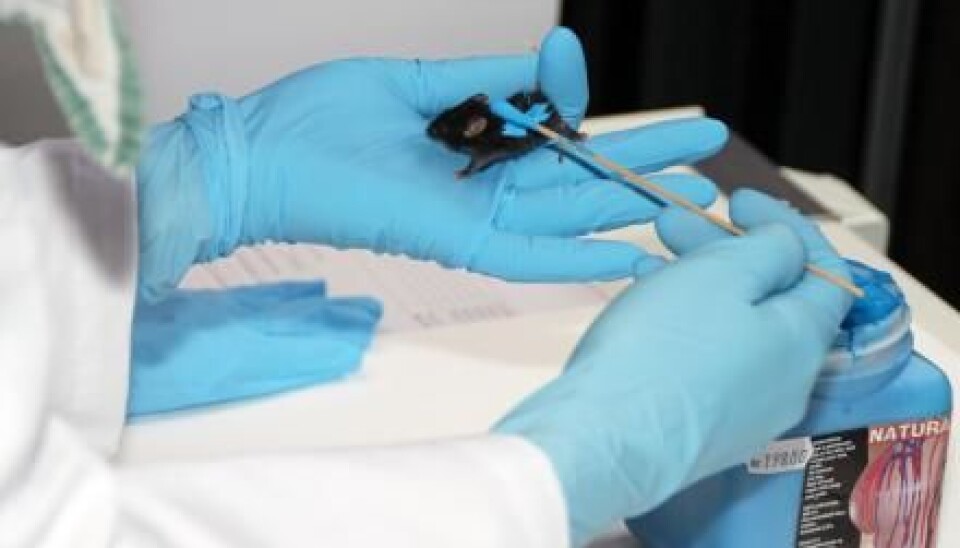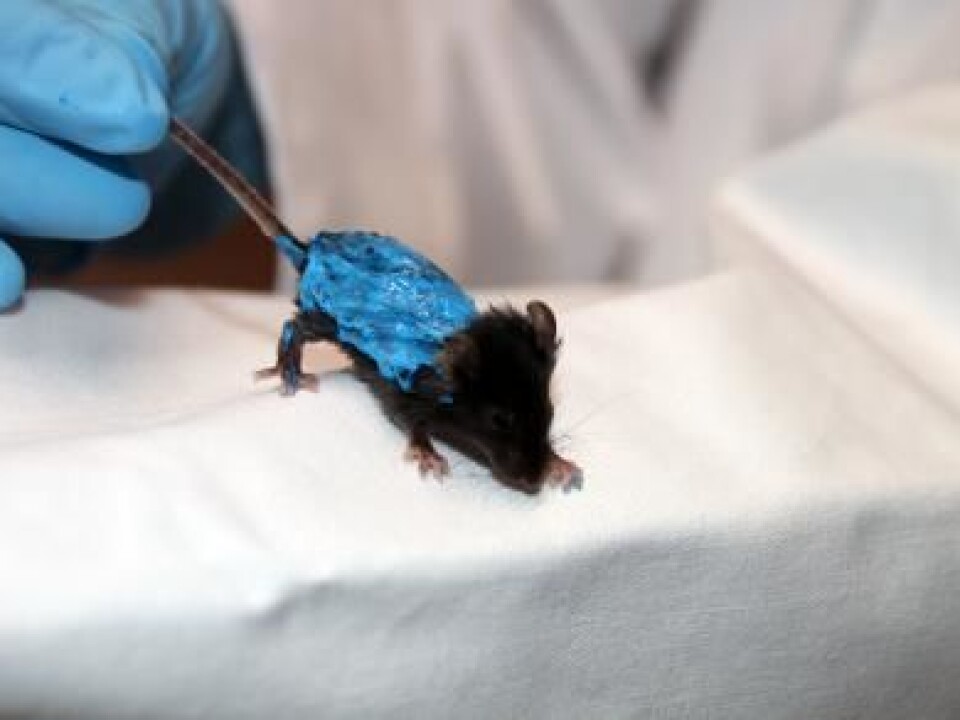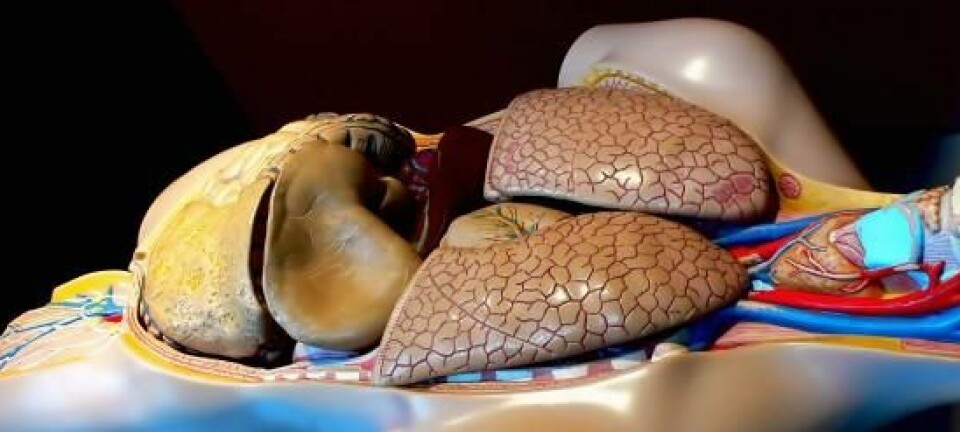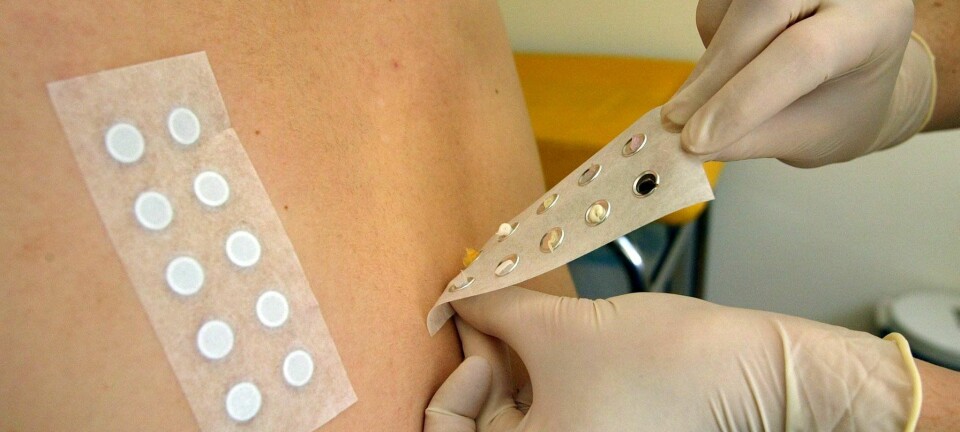
Sex accessory led to surprising skin discovery
Lab mice covered in liquid latex from a sex shop have shown hitherto unseen communication between the skin and the liver. Researchers believe this discovery will be important for understanding how skin diseases affect the body’s organs.
Danish scientists have discovered that the skin communicates with the liver.
The surprising discovery was made using genetically engineered lab mice that lacked a special fat-binding protein, known as axyl-CoA-binding protein, whose function the researchers wanted to examine. The absence of this protein caused fat to accumulate in the liver.
In the laboratory, the researchers covered the mice in liquid latex, which they had bought in a local sex shop.
The result of this experiment was that the mice’s livers returned to a normal and healthy state which, according to the researchers, shows that some hitherto unknown form of communication between the skin and the liver occurred.

”This is interesting, as we did not know that there was any communication between the skin and the liver. We observed that the skin affects the metabolism in the liver, and this is very surprising and may have implications for people who suffer from a variety of skin diseases because their disease may also affect their internal organs,” says Professor Susanne Mandrup, of the Department of Biochemistry and Molecular Biology at the University of Southern Denmark.
Knockout mice provided the answer
In the study, the researchers used so-called ‘knockout mice’, where they ‘knocked out’ an existing fat-binding protein.
The mice were characterised by:
- Accumulation of fat in the liver. This means that the entire fat-formation system in the liver was inactivated, since the liver ‘thinks’ the body has enough fat.
- Having great difficulties in weaning from their mothers.
- Having ruffled fur and ‘leaky’ skin.
We observed that the skin affects the metabolism in the liver, and this is very surprising and may have implications for people who suffer from a variety of skin diseases because their disease may also affect their internal organs.
”So we’re talking about weaklings that required extra care in order to survive,” says Mandrup.
The problem lay in the skin
To examine these mice closer, the researchers genetically modified another group of mice, this time lacking the fat-binding protein only in the liver, not elsewhere in the body.
These mice functioned normally and showed no signs of either fat accumulation in the liver or having a defective fat-formation system
”We initially assumed that this had something to do with the liver,” says Mandrup.
To figure out the reason behind this metabolic abnormality, they carried out a series of new experiments, including genetically engineering mice that only lacked the fat-binding protein in the skin.
This presented the researchers with a big surprise:
”These mice were virtually identical to the mice that lacked the protein in their entire body – i.e. they accumulated fat in the liver and their fat-formation system was inactivated. They also had the characteristic that they lost a lot of water through the skin.”
Bring on the liquid latex
The researchers then covered the mice in Vaseline to prevent water from evaporating from the skin, thus stopping the heat loss.
The fat levels in the liver dropped instantly and the fat-formation system returned to its normal state.
However, since Vaseline contains fat, the researchers had to find a ‘fat-free’ alternative because the fat in the Vaseline could theoretically be absorbed by the skin or ingested by the mice.
This is where the local sex shop entered the picture, as one of Mandrup’s students got the idea to cover the mice in liquid latex, which is available in a sex shop.
The liquid latex had the same effect as the Vaseline – the liver returned to a normal state.
Why fat accumulates in the liver
Mandrup believes the reason why the liver was affected when the mice were covered in liquid latex may be that as the mice lose water, they also lose body heat.
"We believe that the leaking of water from the skin makes the mice feel cold, and that this leads to breaking down of fat in their adipose tissue. The broken-down fat is then moved to the liver. The mice move energy from the tissues to the liver,” says Mandrup.
“It is well known that we burn fat when we are cold, but we are the first to demonstrate that a defect in the skin can have the same effect as cold exposure and thus regulate the breaking down of fat in the adipose tissue. We are also the first to demonstrate that leaky skin can affect liver metabolism.”
------------------------
Read the Danish version of this article at videnskab.dk









